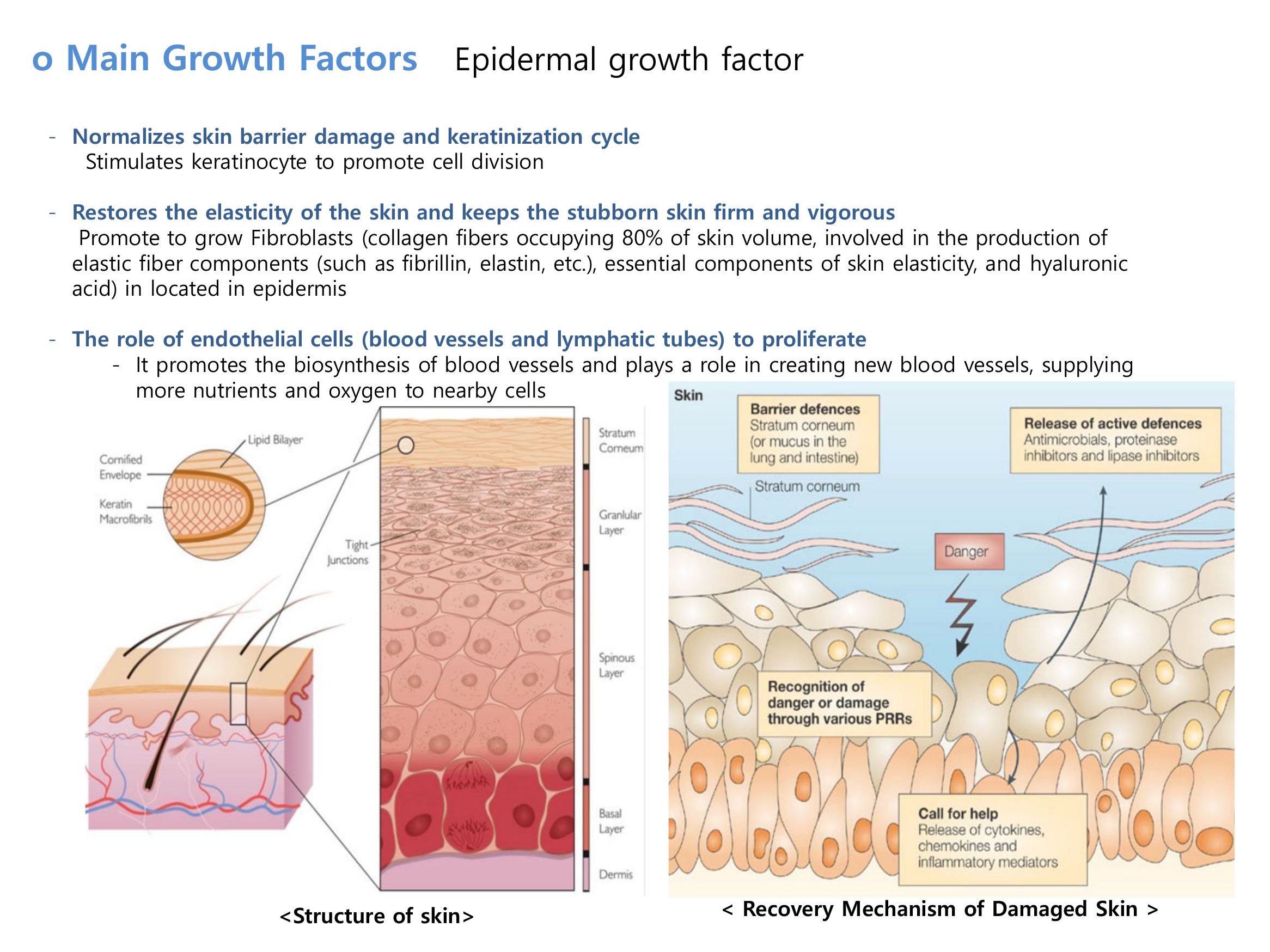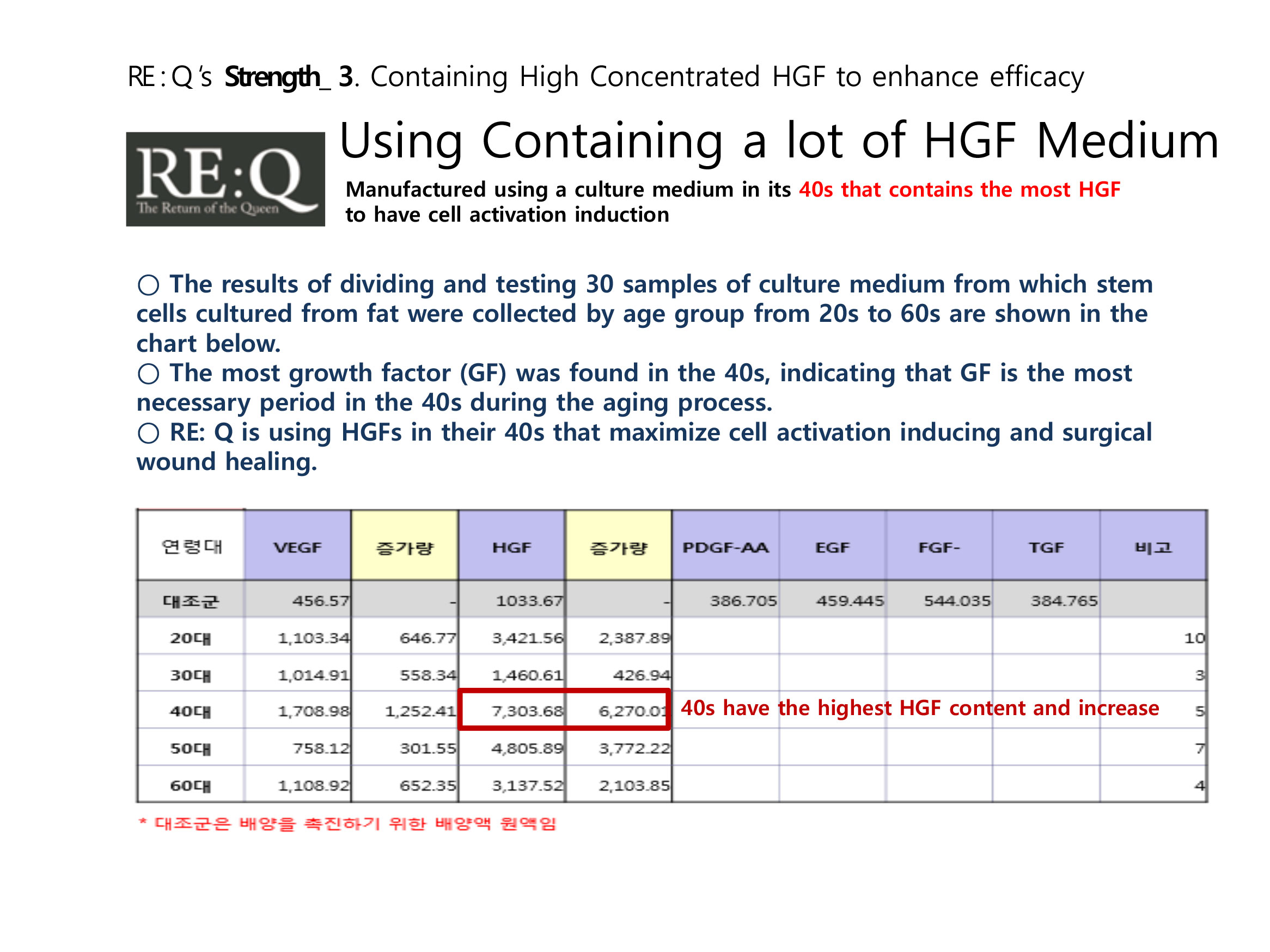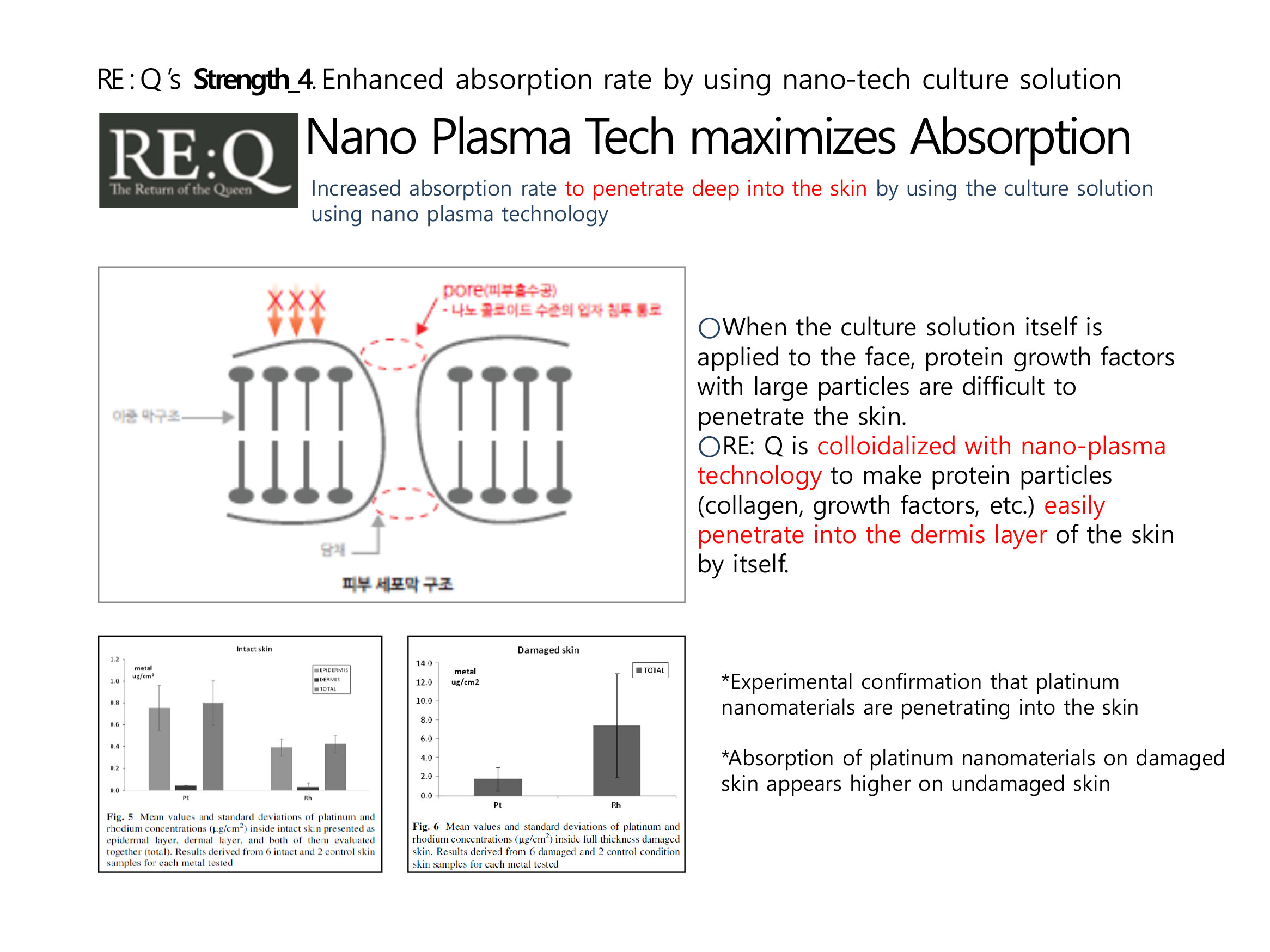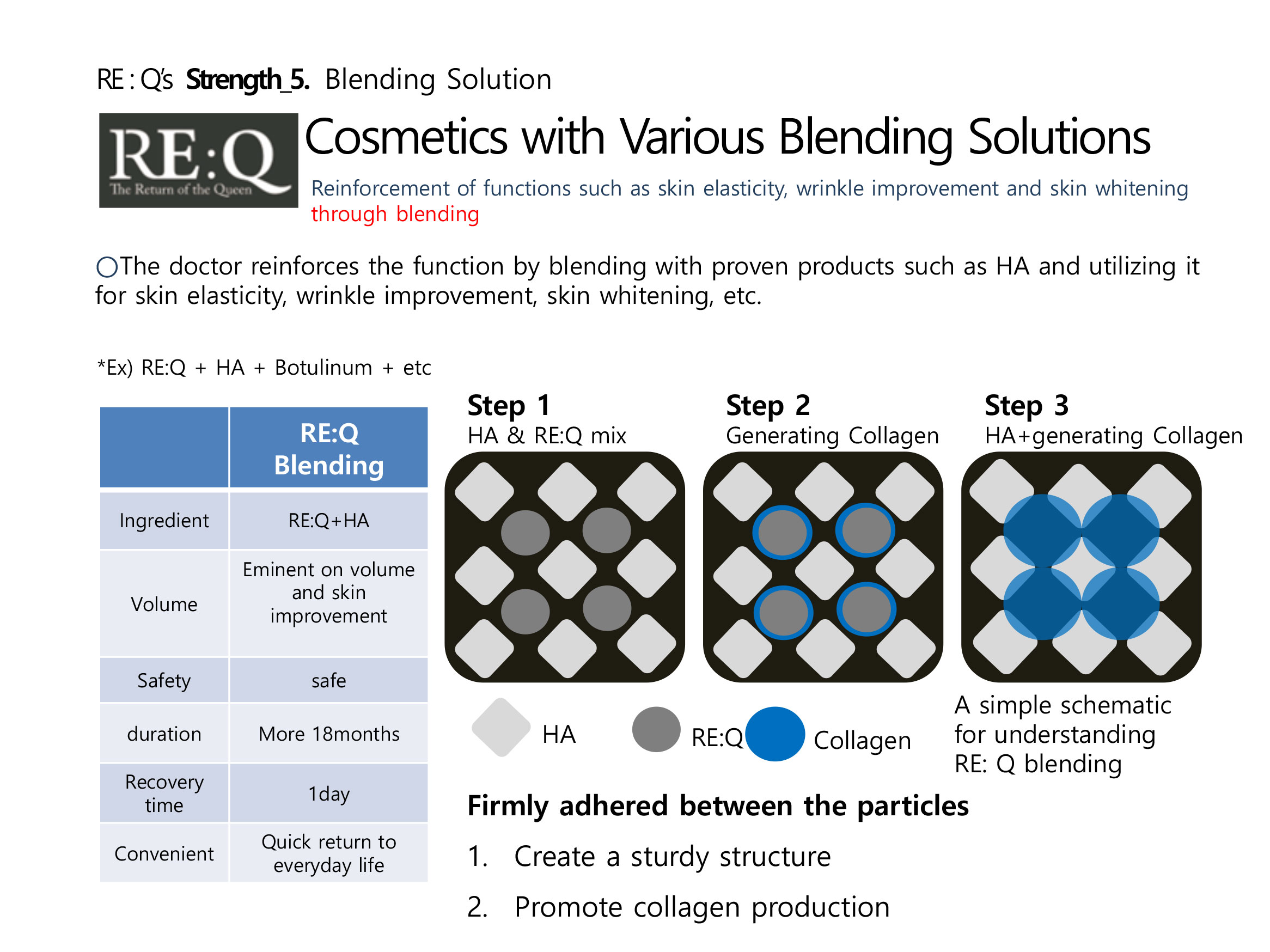Understanding Stem Cell Conditioned Media (ReQ)
Stem cell:
Regeneration of damaged cells having functions of self-replicating ability / differentiation ability / homing effect.
Stem cell conditioned media:
Forms of growth factors or cell activators that are protein signaling substances => Material that activates stem cells.
Growth Factor
- A kind of cytokine that promotes cell growth, proliferation, and differentiation.
- Most of them are protiens such as peptides and act as intercellular signals that plays a positive role.
Stem Cell Activator
- Promotes cell growth or life activity as a signaling substance secreted by cells proliferating.
- Commonly referred to as Cytokine (also in the human body).
- Cytokine is a substance that cells secrete by theselves and plays a positive and negative role.
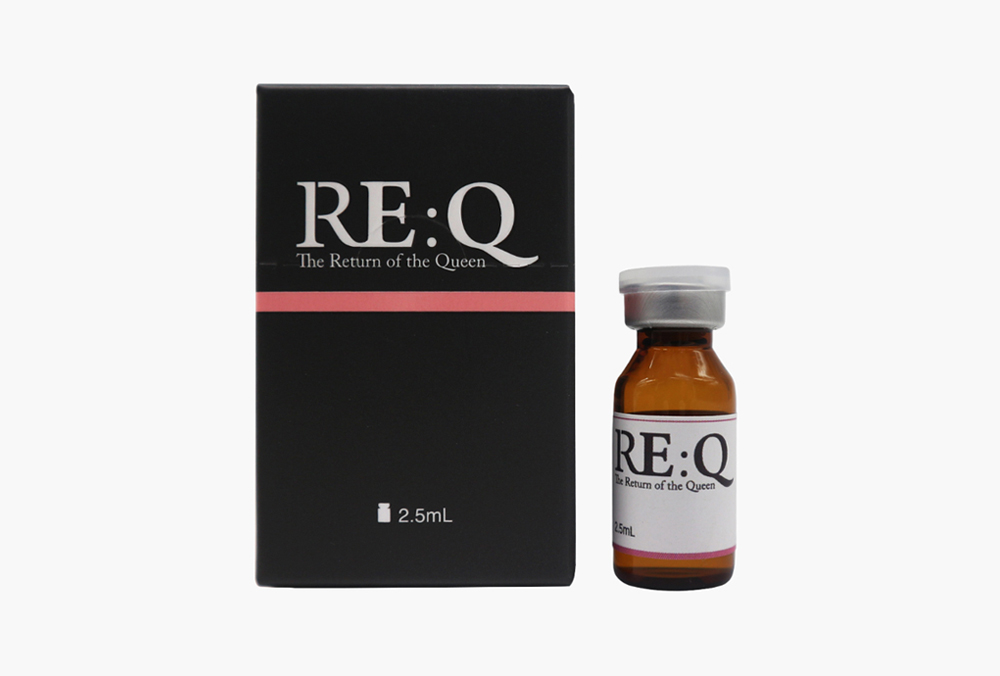
key Growth Factors in RE:Q
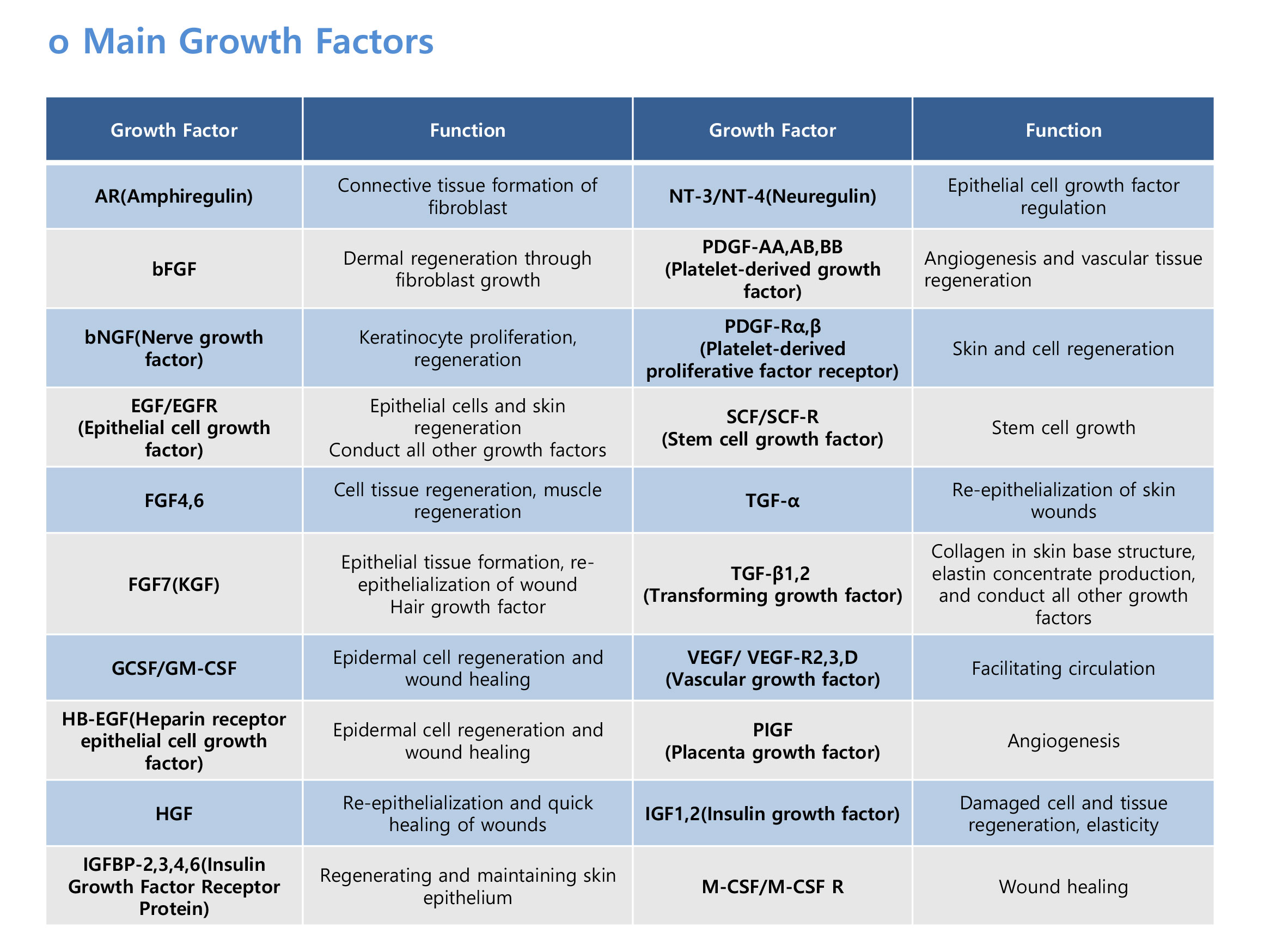
EGF (Epidermal Growth Factor)
It is known to promote the growth of fibroblast and keratinocyte, induce collagen biosynthesis and regeneration of skin barrier.
IGF (Insulin like Growth Factor)
It is known to promote cell division and regenerate damaged cells, and is also known to promote hair growth.
FGF (Fibroblast Growth Factor)
With the introduction of a wide variety of cytokines, it is known to be a growth factor deeply involved in the proliferation and differentiation of cells and tissues. It is said to increase the synthesis of ECM (Extracellular Material) Such as collagen, elastin fiber and hyaluronic acid as well as fibroblast proliferation.
VEGF (Vascular Endothelial Growth Factor)
It is mainly derived from platelets, and it is know that it promotes the division of vascular endothelial cells and is involved in the generation of new blood vessels. It protects blood vessels, is involved in the differentiation and migration of cells, and also affects hair growth and hair follicle strengthening.
PDFGF (Platelet-Derived Growth Factor)
It is known to promote the replication of osteoblasts and the formation of osseous tissues involved in the replication and regeneration and regeneration of stem cells. It is also involved in the production of new blood vessels by promoting endothelial cell proliferation. On the other hand, it promotes fibroblast proliferation and is known to be involved in collagen production.
TGF (Transforming Growth Factor)
Converting growth factors are known to play a major role in the synthesis of collagen, and are known to promote the production of ECM substances. Promotes cell division and angiogenesis, and promotes the differentiation of stem cells into osteoblasts.
Copper Peptide
The Copper Peptide promotes the synthesis of collagen and ECM materials and is involved in the creation of new blood vessels. It is also known to have antioxidant properties.
Thioredoxin
Thioredoxin is a cytokine known to inhibit the function of reactive oxygen work. It is known to have excellent antioxidant and anti-inflammatory action, inhibit the expression of melanin pigment and prevent pigmentation.

- The epidermis is located at the outermost art of the human body and receives a lot of stimuli from outside, which has a better capability to regenerate itself.
- In fact, there are epidermal stem cells at the bottom of the epidermis, and they have diversity of differentiation into hair follicles, sweat glands, sebaceous glands, and epidermis.
- Furthermore, since epidermal stem cells are easy to botain from patients
- The epidermal stem cells are firmly attached to the basal membrance of the lower part of the epidermis of 20 layers or more, and are likely to be damaged when extracte.
Epidermal stem cell
- Epithelial tissue is a tissue that exists in the extracellular area of the living body. It is constantly exposed to external stimuli and needs to be regenerated. The skin is divided into epidermis and dermis by the basement membrance.
- The epidermis is derived from ectoderm along with hair follicle. It is located at the outermost part of skin and ECM change in skin cell division is used as stem cell marker.
- Epidermal stem cells are also known to be multifunctional, and stem cells isolated from the skin are known to differentiate into nerve and muscle fat cells.






